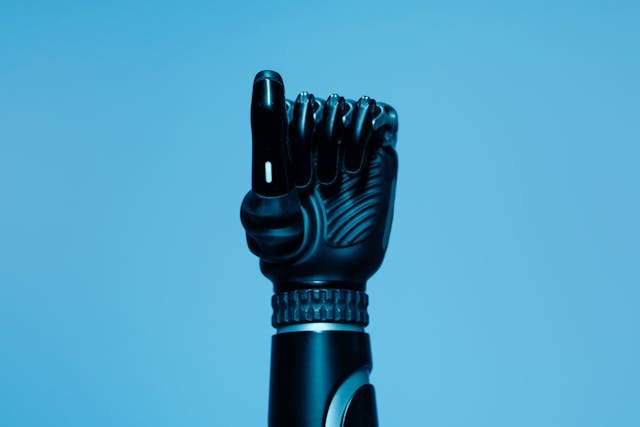Prosthetic technology is evolving faster than ever. What once seemed like science fiction—robotic limbs that move like real arms, bionic hands with a sense of touch, and mind-controlled prosthetics—is now becoming reality. By 2030, advancements in artificial intelligence, robotics, and biotechnology will transform prosthetic devices, making them more lifelike, functional, and affordable.
This article explores the future of prosthetic technology, backed by data, trends, and expert insights. From AI-driven bionics to 3D printing and neuroprosthetics, let’s take a deep dive into what’s coming in the next decade.
AI and Machine Learning in Prosthetics
Artificial intelligence (AI) is already making a big impact on prosthetic limbs, but by 2030, it will be a game-changer. AI-powered prosthetics can analyze real-time movement patterns and predict user needs. This means bionic limbs will become more intuitive, allowing users to move naturally without thinking about every action.
Machine learning algorithms will personalize prosthetics based on an individual’s daily habits. Over time, these smart limbs will learn how the user moves, adjusts their grip, and reacts to different terrains. The result? A seamless, almost biological movement experience. Companies like Open Bionics and Ottobock are already developing AI-driven prosthetics, and experts predict that by 2030, these smart limbs will be widely available.
Another major breakthrough will be AI-driven sensory feedback. Currently, prosthetics provide limited feedback, but new technology will allow users to “feel” temperature, pressure, and texture. This is achieved by connecting prosthetics to nerves using advanced neural interfaces, helping users regain lost sensations.
3D Printing: The Future of Affordable and Custom Prosthetics
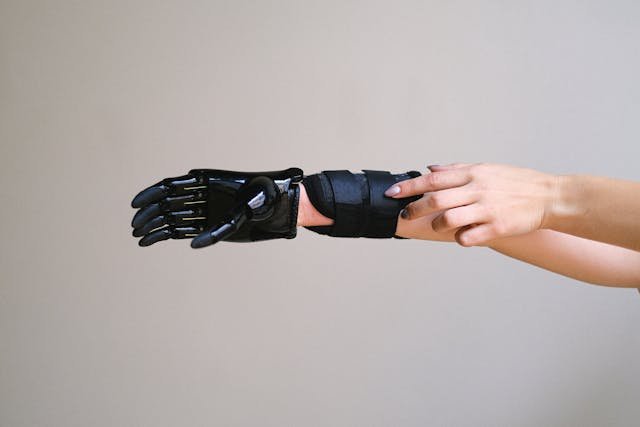
3D printing is revolutionizing prosthetic manufacturing, making high-quality devices more accessible and affordable. Traditionally, prosthetics were expensive, with custom designs taking weeks or months to produce. With 3D printing, this process is faster, reducing production time from months to just a few days.
By 2030, 3D-printed prosthetics will be widely available at a fraction of the current cost. These prosthetics are lightweight, durable, and fully customizable. A person can get a personalized prosthetic limb that perfectly fits their body, making it more comfortable and functional. Companies like Robobionics are leading the way in creating 3D-printed bionic hands, such as Grippy™, that are cost-effective and designed to meet users’ specific needs.
Moreover, the combination of AI and 3D printing will allow real-time prosthetic modifications. Imagine a prosthetic limb that automatically adjusts its fit based on the user’s activity level, swelling, or temperature changes. This is the future we can expect by 2030, making prosthetics more comfortable and practical than ever.
Bionic Limbs with a Sense of Touch
One of the biggest challenges in prosthetic development has been replicating the sense of touch. By 2030, bionic limbs will have advanced sensors that send real-time feedback to the brain, allowing users to “feel” again.
Scientists are working on neural implants that connect directly to the nervous system. These implants send signals to the brain, mimicking the sensation of touch. Research from institutions like the University of Pittsburgh and MIT has shown promising results, and experts predict that commercial availability is not far off.
In addition to sensory feedback, bionic limbs will integrate temperature sensors, pressure detectors, and even pain receptors. This innovation will make prosthetics feel more like natural limbs, reducing phantom limb pain and improving overall user experience.
Brain-Controlled Prosthetics: The Next Evolution
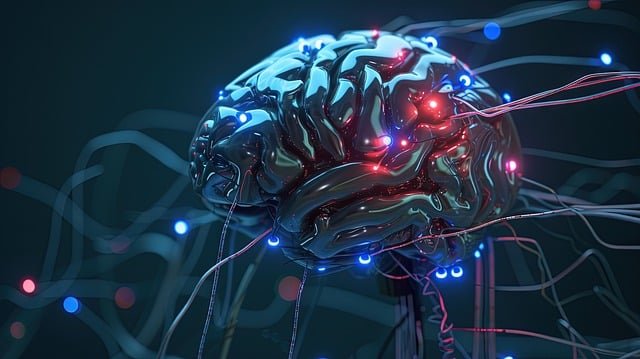
Brain-computer interfaces (BCIs) are at the forefront of prosthetic technology. By 2030, we can expect mind-controlled prosthetics that allow users to move their limbs just by thinking.
Currently, BCIs are still in their early stages, but companies like Neuralink and DARPA are making rapid progress. These interfaces work by detecting brain signals and translating them into movement. In the future, users will have prosthetic limbs that respond instantly to their thoughts, eliminating the need for manual controls.
Another exciting possibility is the integration of memory-based movement. Future prosthetics could remember frequently performed actions and execute them automatically. This means that daily activities like gripping objects, typing, or walking up stairs will become effortless for prosthetic users.
Soft Robotics and Flexible Prosthetics
Most prosthetics today are made from rigid materials, but the future will bring soft robotics into the picture. Soft robotic prosthetics are made from flexible, skin-like materials that mimic natural human tissue. These materials allow for smoother and more organic movements.
By 2030, we’ll see prosthetics that bend, stretch, and move just like real limbs. Companies like BioModex and researchers from Harvard University are developing prosthetic arms and legs that use soft actuators, allowing a more natural range of motion.
Another advantage of soft robotics is comfort. Many prosthetic users experience discomfort due to rigid structures, but flexible materials will make prosthetic limbs more comfortable for all-day wear. This will be especially beneficial for children and elderly users, who need more adaptable solutions.
Gamified Prosthetic Rehabilitation
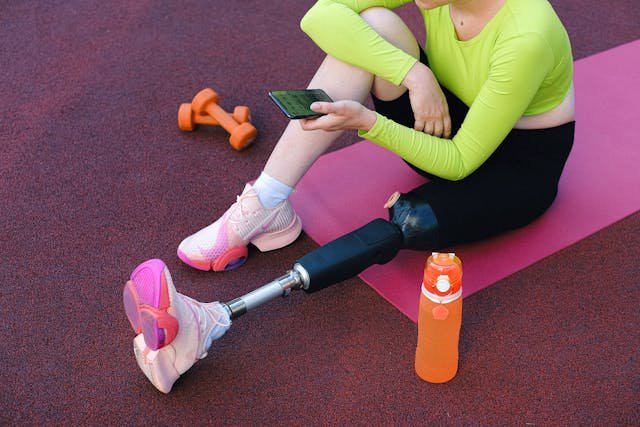
Rehabilitation is a crucial part of adapting to a prosthetic limb, and by 2030, gamification will make this process easier and more engaging. Virtual reality (VR) and augmented reality (AR) will be integrated into rehabilitation programs, helping users learn how to use their prosthetics in a fun, interactive way.
Gamified rehab programs will provide real-time feedback, tracking progress and adjusting training exercises based on performance. Studies show that patients using VR-based rehab recover 30% faster than those using traditional methods. Robobionics is already working on gamified home-based rehabilitation, making the transition to prosthetic use more seamless and enjoyable.
Additionally, AI will customize rehab programs based on an individual’s learning speed and progress. By 2030, rehab will no longer be a frustrating process but an engaging experience that helps users regain mobility faster.
The Role of Biotechnology in Prosthetics
Advancements in biotechnology will further blur the lines between human biology and prosthetics. By 2030, we will see the development of bioengineered limbs, which integrate living tissue with prosthetic components.
Scientists are already working on bioprinting skin and muscle tissue, which could be applied to prosthetics to create more lifelike limbs. This innovation will not only improve aesthetics but also enhance functionality.
Another exciting field is regenerative medicine, which focuses on restoring lost limbs through stem cell therapy. While full limb regeneration may not be possible by 2030, partial restoration techniques will complement prosthetic use, making the experience even more natural.
The Future of Prosthetic Accessibility and Affordability
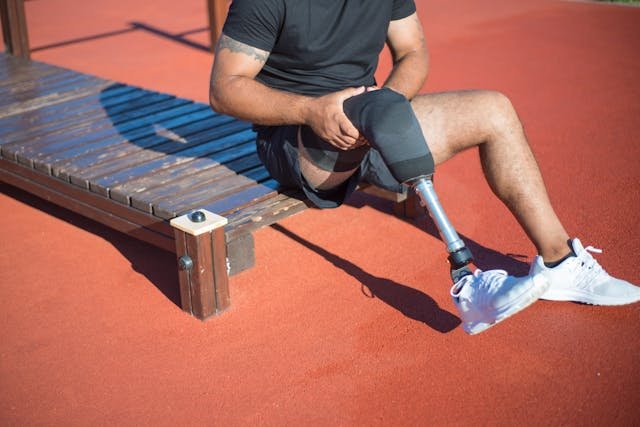
While high-tech prosthetics are impressive, they must also be accessible and affordable. By 2030, advancements in manufacturing and technology will significantly reduce costs, making prosthetics available to more people worldwide.
Companies like Robobionics are leading the way by providing affordable prosthetic solutions in India. Localized production, 3D printing, and streamlined distribution channels will help bring prosthetics to underserved communities.
Additionally, governments and NGOs are expected to invest more in prosthetic accessibility. Initiatives like “Make in India” will boost local manufacturing, ensuring that high-quality prosthetics are available at lower costs. By the end of the decade, the dream of affordable and functional prosthetics for all could become a reality.
The Role of Sustainability in Future Prosthetic Development
Sustainability is becoming a key factor in prosthetic development. As technology advances, it’s crucial to ensure that innovations are environmentally friendly and sustainable. By 2030, the prosthetic industry will see a significant shift toward eco-friendly materials and energy-efficient designs.
One major focus will be on biodegradable and recycled materials. Traditional prosthetics are made from plastic and metal, which have a high environmental impact. Researchers are developing bioplastics and plant-based composites that reduce waste without compromising strength and durability. These materials will make prosthetics more sustainable and cost-effective.
Another important trend will be energy-efficient prosthetics. Many advanced prosthetic limbs require batteries, but future designs will incorporate self-charging systems. Innovations like kinetic energy harvesting, where movement generates power, will reduce the need for frequent charging. Additionally, solar-powered prosthetics will become more common, providing users with reliable and renewable energy sources.
Governments and companies are also pushing for greener production methods. By 2030, we can expect sustainable manufacturing processes that minimize carbon emissions and reduce waste. Robobionics is already taking steps toward sustainable prosthetic development, ensuring that innovation doesn’t come at the cost of the environment.
The Impact of Robotics on Lower-Limb Prosthetics
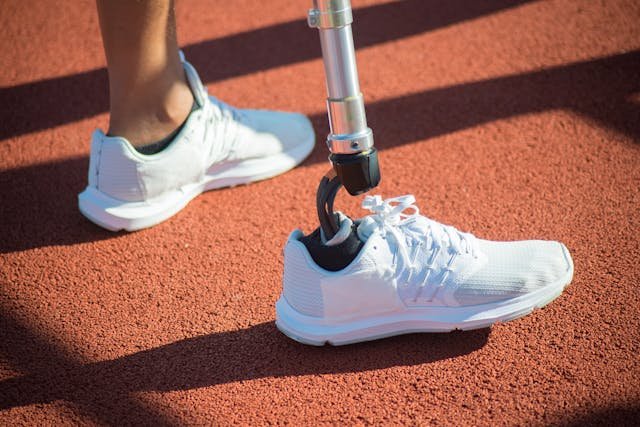
While much of the focus has been on advanced bionic arms and hands, lower-limb prosthetics are also undergoing a major transformation. Robotics is playing a crucial role in developing next-generation prosthetic legs, feet, and exoskeletons that provide better mobility and stability.
By 2030, robotic prosthetic legs will feature adaptive gait technology, which allows users to walk naturally on various surfaces. These prosthetics will automatically adjust to different terrains, slopes, and obstacles, reducing the risk of falls and improving overall movement. AI-driven sensors will analyze walking patterns and make real-time adjustments, giving users greater confidence and independence.
Another exciting development is the integration of powered exoskeletons. These devices help people with severe mobility impairments regain their ability to walk. By combining AI, robotics, and lightweight materials, exoskeletons will become more accessible and affordable in the coming years. Companies like Ekso Bionics and ReWalk Robotics are already pioneering these technologies, and by 2030, they will be a standard option for those with mobility challenges.
Additionally, the future of lower-limb prosthetics will focus on enhanced comfort. Innovations in socket design and pressure distribution will ensure a better fit, reducing discomfort and long-term strain on the body. The goal is to make prosthetic legs feel as close to natural limbs as possible, allowing users to move with ease and confidence.
Personalized Prosthetics: Tailoring Technology to Individual Needs
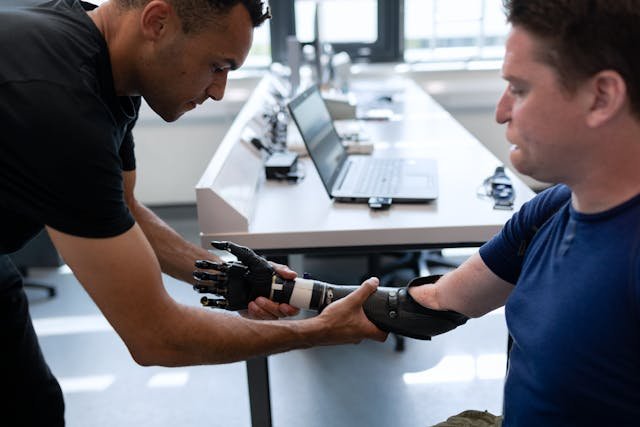
One of the biggest shifts in prosthetic technology will be the move toward hyper-personalization. By 2030, no two prosthetic limbs will be the same—each will be designed specifically for the user’s body, lifestyle, and preferences.
3D scanning and AI-driven customization will play a key role in this transformation. Instead of using standard prosthetic models, users will get devices tailored to their exact limb shape and movement patterns. This will improve comfort, reduce pressure points, and enhance functionality. Companies like Robobionics are already offering customized solutions, and the trend is expected to grow significantly.
Another key aspect of personalization is aesthetic customization. Today, many users choose prosthetics that match their skin tone, but by 2030, options will go far beyond that. From designer prosthetics to artistic, tattoo-like designs, users will have the freedom to express their personality through their prosthetic limbs. Advances in materials will also allow for texture and softness that mimic real skin, making prosthetics look and feel more natural.
Functionality will also be highly personalized. Future prosthetic hands and arms will come with interchangeable grips, allowing users to switch between different attachments for specific activities. Whether it’s a specialized grip for playing an instrument or a tool for weightlifting, personalized prosthetics will empower users to do more than ever before.
The Role of Insurance and Government Policies in Prosthetic Accessibility

As prosthetic technology advances, the next challenge is ensuring that these innovations are accessible to those who need them. One of the biggest barriers to prosthetic adoption is cost, but by 2030, new policies and insurance models will make high-tech prosthetics more affordable.
Governments around the world are recognizing the importance of assistive technology. Countries like India are investing in initiatives that provide subsidized prosthetic solutions to those in need. The “Make in India” movement is helping companies like Robobionics produce affordable, locally made prosthetics that reduce dependence on expensive imports. By 2030, similar programs will expand, ensuring that more people have access to high-quality prosthetic limbs.
Insurance companies are also adapting to cover advanced prosthetic solutions. Many current policies only cover basic prosthetic devices, but as AI-driven bionics become the standard, insurance models will change. More comprehensive coverage will ensure that people with limb loss can afford state-of-the-art prosthetics without financial strain.
Non-profit organizations and social impact programs will also play a major role. By 2030, partnerships between prosthetic manufacturers, NGOs, and government bodies will create large-scale initiatives to provide free or low-cost prosthetics to underserved communities. These efforts will ensure that no one is left behind in the era of advanced prosthetic technology.
Final Thoughts: The Road Ahead
The future of prosthetic technology is filled with possibilities. By 2030, innovations in AI, robotics, 3D printing, and biotechnology will make prosthetic limbs more advanced, functional, and accessible than ever before. Users will experience greater freedom, comfort, and independence, thanks to personalized, brain-controlled, and sensory-enhanced prosthetics.
Companies like Robobionics are at the forefront of these advancements, ensuring that cutting-edge technology reaches those who need it most. Whether it’s AI-powered bionic hands, 3D-printed custom prosthetics, or gamified rehabilitation, the next decade will redefine what’s possible in prosthetic care.
If you or a loved one is looking for a high-quality, innovative prosthetic solution, book a free demo of Grippy™ today and experience the future of prosthetic technology firsthand. Contact Robobionics now to learn more about our advanced, affordable, and accessible prosthetic solutions.



